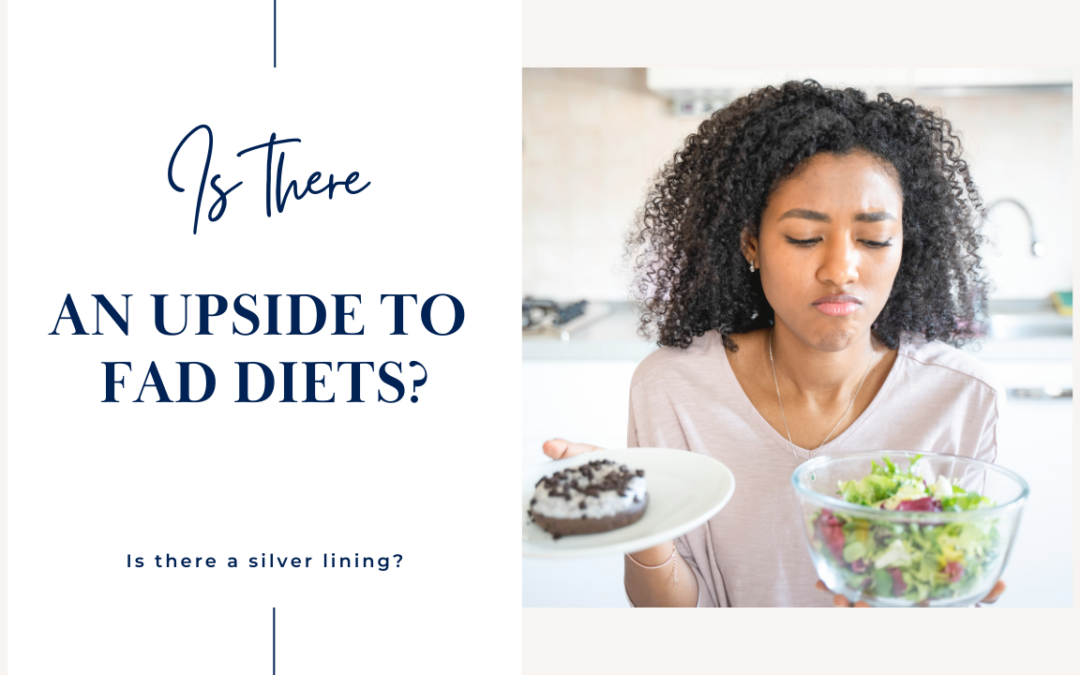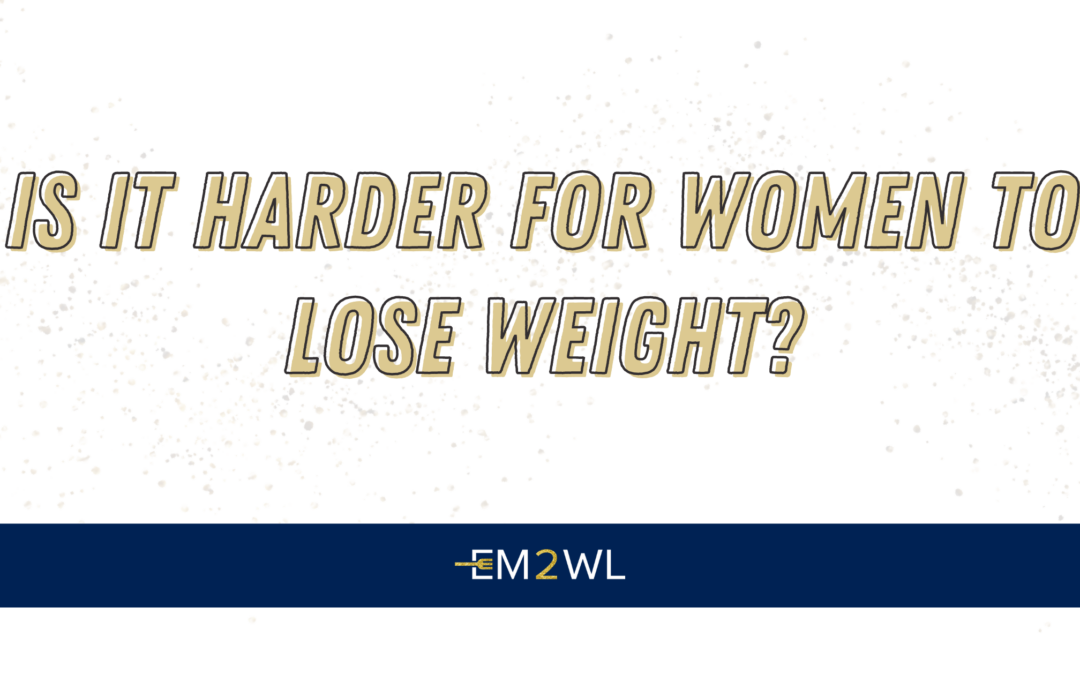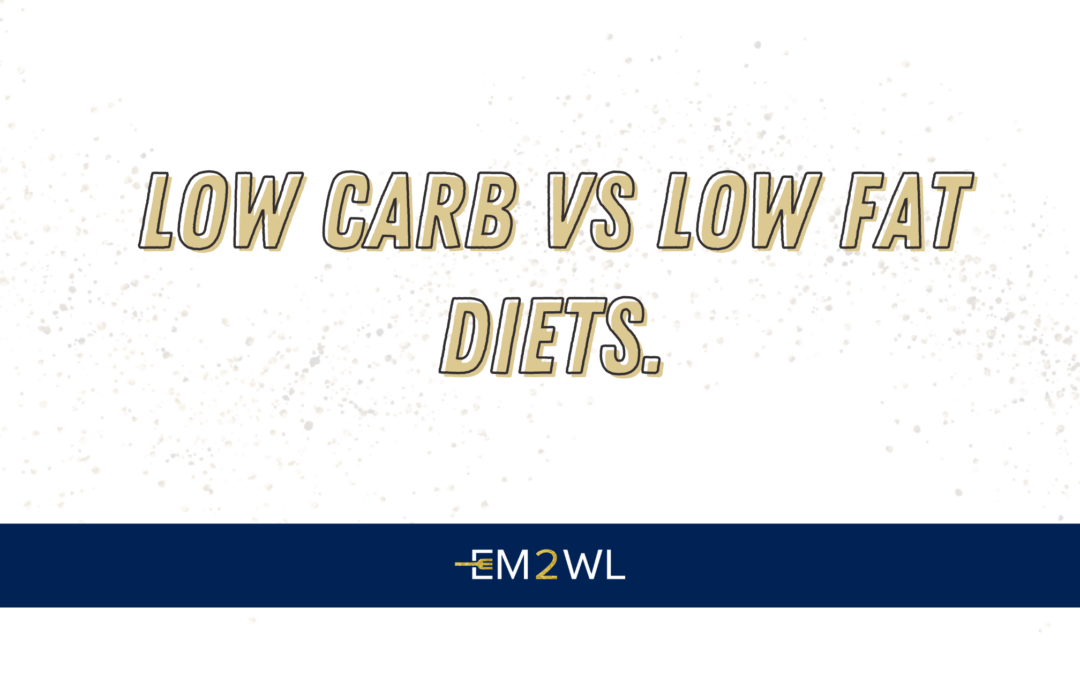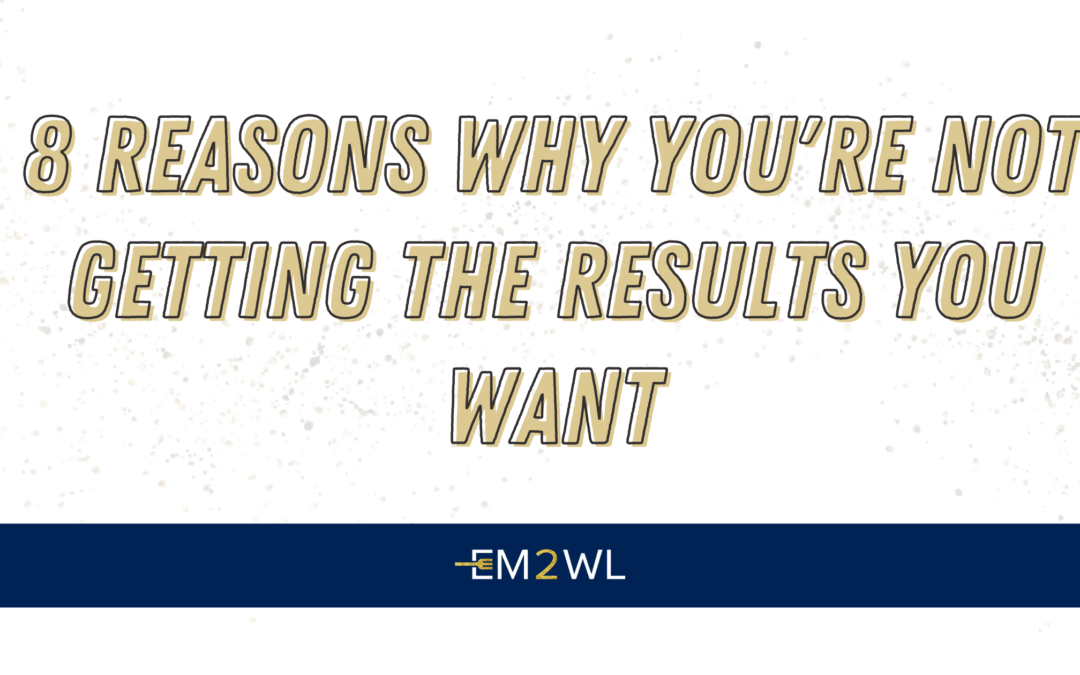
by EM2WL | Jul 12, 2024 | Diet Mentality
Fad diets — ever-changing eating crazes that promise everything from rapid weight loss to boundless energy — often come under fire for their unsustainable nature and potential health risks (basically 99.999999% of posts on this site!). But what if there’s more to these fleeting food trends than meets the eye? Let’s peel back the layers and uncover some unexpected positives that might just change your perspective (and help you forgive yourself for the years…ok, decades…that you may have spent on the fad diet hamster wheel.)
Innovation in the Food Industry
This is hands-down my FAVE “benefit.”
Fad diets may be one-hit wonders for shedding pounds; but they’re catalysts for culinary creativity.
Think about it: would brands like Quest, 647, or Farilife even exist without the low-carb craze of the early 2000s? (I mean, Core Power single-handedly converted my 15+ year anti-protein-drink stance…)
Would grilled chicken nuggets, sweet potato fries, or almond butter have ever seen the light of day without the fads they rode in on?
Maybe…maybe not…
BUT thanks to fad diets, food manufacturers and restaurants are constantly pushing the boundaries, offering innovative products and menu options that cater to specific dietary needs and preferences.
For instance, the rise of plant-based eating, fueled in part by various fad diets, has led to a surge in meatless options at restaurants and grocery stores. Whether you’re a committed vegetarian or just looking to incorporate more veggies into your diet, there’s never been a better time to explore the world of plant-based cuisine.
And let’s not forget about “superfoods.” Once obscure ingredients like acai berries, kale, and chia seeds have gained superstar status thanks to their promotion in fad diets. While their original hype may have died down, these nutritional powerhouses earned a permanent spot as nutrition boosts for smoothie bowls and salads add-ins for those that already loved and adored their less “super” relatives.
Also…have you tried all of the prebiotic “soda” options – I’m slightly obsessed with testing every Poppi flavor I come across! (Ok…definitely not soda, lol – but my sparkling water has gotten a major upgrade, and even my grandson will drink it!) But I digress…
Increased Awareness
Love them or loathe them, fad diets have one undeniable impact: they get people talking about nutrition. As each new diet trend dominates headlines, women are prompted to become more discerning about the foods they consume and the effects they may have on their goals.
Just like the person who craves financial independence, conquering physique goals requires taking a closer look at your “spending” habits and analyzing how it’s affecting your bottom line.
Encouragement of Healthy Eating
[Be forewarned, I go further down the hypocrisy rabbit hole here by putting “fad diets, and “nutritional” together in the very next sentence.]
Amidst the chaos of fad diets, there’s often a glimmer of nutritional wisdom. Yep. I said it.
As much as it makes someone like me absolutely cringe to admit, many fads emphasize the importance of whole foods, fruits, and vegetables, encouraging people to incorporate more nourishing options into their daily diet. Whether it’s swapping out refined carbs for cauliflower or adding more greens to your plate, these small changes can actually have a big impact on your health. (So long as they’re not taken to extreme measures by completely omitting other nutritious options – which is usually where fads tend to veer off the deep end.
Community Support
While most of us may never want to acknowledge it, one of the biggest allures of fad diets is feeling like you’re a part of something. (Even if you’re a complete recluse like me.). Whether it’s swapping success stories on social media or seeking support in online forums, fad dieters often find themselves part of a tight-knit community of like-minded individuals. This sense of camaraderie provides much-needed support, motivation, and a shared understanding of the dietary journey.
Being part of a community can make even the most ridiculous fads easier to stick to.
So when a new fad sweeps the globe, and we choose to not jump on the bandwagon – feeling left out and lonely can compound the self doubt that we often feel when striving for a goal, making giving up (or slowing down) a higher probability.
Research and Development
While many fads are essentially half-truths from actual research, (read: someone takes decades of research, pulls out a marginal/outlier statement and creates a “brand” around it) sometimes… it’s the other way around.
Believe it or not, fad diets can fuel scientific curiosity. As a particular diet gains traction, researchers are spurred into action, eager to uncover its efficacy and potential health benefits. This flurry of research contributes to our evolving understanding of nutrition, shedding light on the complex interplay between diet and health.
As someone who adores the research, I find it particularly fascinating to follow the decades of lab and in-the-trenches trials and debates produced by some of the world’s greatest minds – that evolve from a simple “viral” topic.
Embracing Moderation
Perhaps the greatest gift of fad diets is the realization that extreme measures are rarely sustainable.
Instead of adhering to rigid rules, more and more women are embracing the mantra of “everything in moderation.” By adopting a balanced approach to eating, they can finally enjoy the occasional indulgence without derailing their physique goals.
The days of having to choose between living your life and losing fat are not only outdated, but completely unnecessary.
Yes. Being a woman over 40 often equates to having been… exposed… to a much wider variety of fad diets than our younger counterparts. But, this can actually work in your benefit if you’re willing to crush your old Diet Mentality (read: the desire to get even stricter – or worse – develop the woe-is-me, “nothing ever works” mindset.)
While acknowledging that past participation in fad diets have likely led to your weight loss plateau – or even weight regain – you don’t have to throw the baby out with the bathwater. Keep an open mind, and start looking at all the benefits, knowledge, and resources that you now have access to, to help you in reaching your goals in a much more attainable (and sustainable!) way.
—-
While these silver linings may offer a glimmer of hope, remember that it’s still essential to approach fad diets with caution. For every cauliflower crust success story, there’s a cautionary tale of unsustainable eating habits and potential health risks. So as we navigate the ever-changing landscape of dietary trends, the key is to embrace the “benefits” that these fads offer, without embracing the actual fad.

by EM2WL | Dec 10, 2022 | Consistency, Diet Mentality
“I’ll start my diet again on Monday” (or the New Year)…
How many times have you heard — or even said — this very statement? Why do some people have no willpower, and are always “starting over?” Rewiring your brain and shedding old habits is a critical pillar of the Diet Rebel Method, and it’s incredibly important because most people keep repeating the same, outdated, self-sabotaging behaviors over and over (wasting years of their life, while actually gaining MORE weight over time), and that may be exactly what you’re doing right now.
If you find yourself regularly caving to free-for-all periods (weekends, Fall/Winter, etc.), followed by “back on the wagon” declarations, you may be making one (or more) of the 3 most common diet mentality mistakes:
#1 – Trying to be too perfect
The first mistake many people make is trying to be “too perfect” when it comes to their diets. This usually involves strict rules about what can and cannot be eaten, with little wiggle room for treats or indulgences. While this may seem like a good idea in theory, in practice it often leads to feelings of deprivation and frustration which can cause people to give up on their goals entirely. Instead of going for perfection, focus on progress instead. Aim for gradual changes that are sustainable over the long term rather than drastic ones that are difficult (or even impossible) to maintain indefinitely. Celebrate small wins along the way and allow yourself some flexibility when it comes to treats or special occasions – this will help keep you motivated and prevent burn-out or binges down the line.
#2 – Using willpower up in other places
Another common mistake is using up all your willpower in other areas of life, leaving none left for your diet. It can be easy to fall into an all-or-nothing mindset – either everything on your plate is healthy or none of it is – but this isn’t realistic (or healthy). When we use our willpower too much in other areas, we don’t have enough left over for our dieting efforts which can lead us down a spiral of unhealthy eating patterns. Every day brings with it new opportunities and challenges; learning how to prioritize self-care will help ensure that you have enough energy left over at the end of each day for taking care of yourself nutritionally as well as emotionally.
#3 – Making too many changes
Finally, one of the most common mistakes people make when trying to lose weight is making too many changes at once. This can leave us feeling overwhelmed and discouraged before we even start! Instead of attempting a total overhaul overnight, take things slow by introducing one change at a time until it becomes a habit before moving onto something else. Whether its adding more vegetables or drinking more water each day, making small incremental changes will help ensure that your new habits stick around long term (and won’t feel so overwhelming).
Making lasting lifestyle changes isn’t easy – especially when those changes involve something as personal as food choices – but by avoiding these three common mistakes you’ll be well on your way towards achieving lasting success with your weight loss journey! Remember, progress not perfection should always be your goal and focus on small steps rather than big leaps forward whenever possible – if you do that then success will eventually follow!
Good luck!

by Keysia Linares Marzullo | Oct 7, 2022 | Diet Mentality, Fat Loss / Cutting, Podcast, Q & A, Uncategorized
Is It Harder For Women To Lose Weight Than Men?… The age-old question.
Yes. It’s not your imagination.
The female fat loss struggle is REAL.
If you’re anything like me, you’ve had at least one experience of spending an inordinate amount of time recruiting a male accountability partner (“hey, let’s do this diet together…please…please”) – only to end up frustrated when he finally agrees and seems to get ALL the results.
Sure, you start off strong and have WAY more willpower, but eventually, you hit a plateau, and he…doesn’t. Of course, this is an oversimplification of gender (not all men lose fat super easily), but men definitely have a few advantages over us.
This podcast discusses the five reasons why fat loss is harder for women.
Here’s a sneak peek into today’s episode…
> [1:30] 5 Reasons Why It’s Harder For Women To Lose Weight
> [2:12] #1 Focus on the Scale
> [5:25] #2 Hormones
> [9:29] #3 Muscle
> [12:36] #4 Diet Preferences
> [17:17] #5 Patience
Click Here to Listen To This Week’s Podcast
About The Diet Rebel Podcast
If you are a woman who hates having to choose between loving your body and changing it, this podcast is for you. In this podcast, we talk about everything from loving your body exactly as it is now to becoming the fittest, leanest, and tonest you’ve ever been – no matter HOW old you are, how many tiny humans you’ve birthed, or how many times you’ve lost & regained the same (15 or 50!) lbs! Seriously, you don’t want to miss it! So grab a snack, preferably protein based (lol), sit back and enjoy the Diet Rebel podcast. Brought to you by Eat More 2 Weigh Less @ eatmore2weighless.com
To support The Diet Rebel Podcast with Kiki Smith, make sure to follow, download, and share the podcast with your family and friends! Enjoy!

Links
Download Your FREE Quick Start Guide
Sign Up For The FREE Women’s Fat Loss Webinar
SUBSCRIBE To Our Youtube Channel
Download our Workout App

by Keysia Linares Marzullo | Sep 25, 2022 | Diet Mentality, Fat Loss / Cutting, Podcast, Q & A, Uncategorized
Low Carb vs. Low Fat and how to determine which one is best for you. Is there even a reason why you have to choose in the first place? I guess we will see as we talk about this in today’s podcast episode.
Low carb today is what low fat was in the nineties. We keep resurrecting many identical diets over and over, and low carb has come in so many variations, from Atkins to Keto. Hence, there are different ranges of what people consider “low carb,” from no carb to low carb and anywhere in between. Many people are wondering if that is a route they should take and in this podcast, you get to listen in on a previous Q&A with my clients we break down the details to help you decide.
Here’s a sneak peek into today’s episode…
> [0:40] Why Do You Have To Choose?
> [3:55] Protein is Non-Negotiable
> [4:41] Fat or Carbs?
> [7:05] #1 Taste Preference
> [10:09] #2 Calorie Deficit Preference
> [13:32] What’s Best For You?
Click Here to Listen To This Week’s Podcast
About The Diet Rebel Podcast
If you are a woman who hates having to choose between loving your body and changing it, this podcast is for you. In this podcast, we talk about everything from loving your body exactly as it is now to becoming the fittest, leanest, and tonest you’ve ever been – no matter HOW old you are, how many tiny humans you’ve birthed, or how many times you’ve lost & regained the same (15 or 50!) lbs! Seriously, you don’t want to miss it! So grab a snack, preferably protein based (lol), sit back and enjoy the Diet Rebel podcast. Brought to you by Eat More 2 Weigh Less @ eatmore2weighless.com
To support The Diet Rebel Podcast with Kiki Smith, make sure to follow, download, and share the podcast with your family and friends! Enjoy!

Links
Download Your FREE Quick Start Guide
Sign Up For The FREE Women’s Fat Loss Webinar
SUBSCRIBE To Our Youtube Channel
Download our Workout App

by Keysia Linares Marzullo | Sep 16, 2022 | Diet Mentality, Fat Loss / Cutting, Podcast
Most of us are blown away when we learn the shocking truth that cardio is not the be-all-end-all of fat loss. It can take some time to fully wrap our heads around the concept (especially if you’re the type who actually ENJOYS it and can’t imagine life without it). Not surprisingly, one of the questions we receive most often in the early stages of discovering EM2WL is: “OK. So, where exactly does cardio fit? How much cardio can/should I do? In this podcast, I’m going to share with you The Hierarchy of Fat Loss and what’s most important.
The Hierarchy of Fat Loss
The Hierarchy of Fat Loss (a concept coined by Alwyn Cosgrove several years ago) is a simple way to self-regulate and decide for yourself if/when it’s time to add cardio to your fat loss protocol. It will also help those that can’t imagine a cardio-less existence to work in their love of endurance in a way that does not contradict their physique goals.
The hierarchy outlines the top five factors you must nail down in order to achieve fat loss. The five levels are listed in order of importance, as is the nature of any hierarchy. This means that if you’re looking to do/add/focus on items that are NOT listed here, they are being given far too much importance in your journey. Let’s take a look at each of the five and why they’re so important in the fat loss equation.
Level 1- Nutrition
Here’s the reality. No matter how hard you work out, run or lift, you can’t outwork a bad diet. Period. If your nutrition is not on point, yet everything else is, you will not optimally achieve results or reach your fat loss goals. The main changes to make in your diet are to eat more protein, more fiber, and more food. Oftentimes, people aren’t eating enough food for fat loss- less isn’t always better. If you’ve to spend periods of time eating low-calorie diets (1200-1500 calories), then you may want to consider a metabolism reset. Before you can expect to lose weight, you must fix your metabolism so it is in proper working order.
Level 2- Nutrition
Nope, that’s not a typo. Level 2 is the same as level 1- nutrition! Why? It’s that important! If you have time for one thing and one thing only with regard to fat loss, nail your nutrition. Make sure you’re hitting your fiber, protein, and calorie goals, and that you’re eating enough to sustain the type of workouts you’ll be doing.
Level 3- Activities that Burn Calories, Promote/Maintain Muscle Mass and Elevate Metabolism
This means lift! Lifting promotes muscle mass growth. The more muscle mass you have, the more calories you’ll burn at rest due to an increased metabolic rate. Not only is muscle good for boosting your metabolism, but it has great cosmetic benefits as well- it looks good! If you’re not comfortable with lifting on your own, consider seeking out guidance from a personal trainer.
Level 4- Activities that Burn Calories and Elevate Metabolism with EPOC (after-burn effect)
If you find yourself having an extra day to work out or time left over at the end of your lift, add in HIIT/Tabata/Interval/Metabolic Resistance style training. If you are short on time but still want to burn fat, these types of workouts are crucial for you. While this type of exercise may not promote muscle mass growth, it certainly can help maintain the muscle mass you already have.
Level 5- Activities that Burn Calories but Don’t Necessarily Maintain Muscle or Elevate Metabolism
Cardio is considered the icing on the cake, and in the puzzle of fat loss, is considered the least effective. This lines up with what we here at EM2WL always preach- cardio for fun, weight to transform.” Cardio works best when it’s not done frequently, because it shocks the body. If you do cardio all the time, your body adapts. If you continue to do the same amount of cardio and burn fewer calories, or don’t see an elevation in heart rate, that may be a good sign you’re doing too much, too often.
Putting it all together: What the hierarchy means to you
If you’re short on time (let’s face it, who isn’t!?) and can’t get to the gym, focus on your nutrition. When you do find yourself having some time, get a lift in. If you can commit to 1-2 days of exercise a week, lift weights those days. If you have 3-4 days, lift and do some HIIT (Level 4) training. If you have more than 4 days a week, then have the icing on the cake and do some cardio and fun aerobic activities you enjoy- Zumba, Body Pump, etc.
For my cardio-loving followers reading this, don’t freak out. Oftentimes people connect a regular cardio routine to results. If you go from doing nothing to doing just cardio, of course, you’re going to see results. But once those results stop, the enjoyment of your workout(s) may stop also. When your cardio workout comes to an end, so does the calorie burn. On the other hand, with lifting, you may not burn as many calories initially during your workout but you’ll continue to burn calories up to 36 hours after your workout is over (called the after-burn/EPOC). This is more beneficial for you compared to just burning calories while you’re on a piece of cardio equipment and not a minute more thereafter. If you’re looking to elevate your metabolism, then going for that after burn is what you want and need.
Especially if you’re a newbie to the world of proper nutrition, it’s important to take baby steps into your new healthy eating journey. Adequate consumption of protein, fiber, and water is key. Focus on adding in or improving upon each (of the three listed above) into your daily intake until you nail it. For example, if you’re currently not drinking enough water, make it a goal to drink at least a gallon a day. Once you can consistently do so for several weeks/at least a month, next tackle eating more protein. Continue this process until you’ve aced all facets of a proper nutrition plan. In order to ensure adherence, eat the types of foods you enjoy while hitting your macronutrient totals. Keep in mind that the foods you consume have to work for your lifestyle and fit your taste preferences in order to be most successful and stay on track.
If you don’t have much time to lift, that’s okay. Do more compound movements and work multiple muscle groups (not isolated movements like bicep curls). Make sure you’re regularly alternating rest periods, sets, and rep ranges. This is important because if you don’t change these variables, your body will adapt and not respond as desired. Rest periods are especially important because they are needed in order for the body to replenish its energy stores. Over a period of time, rotate through the following rep/set/rest schemes (also known as periodization). A sample 12-week rotation could be:
4 weeks: 30 seconds rest, higher reps (12+), lower weight
4 weeks: 45-60 seconds rest, lower reps (8-12), higher weight
4 weeks: 60+ seconds rest, low (5-8) reps, heavy weight
The problem with fat loss is most people approach the process in the opposite order, doing cardio first, then HIIT, then deciding to lift, and then tackling nutrition – no wonder the process can be so frustrating. When you turn the hierarchy on its head, you’re not going to see the results that you want. If you follow the fat loss hierarchy in order, you’ll see better and faster results. Work smart, not hard, and you’ll be more than impressed with the results awaiting you.
Here’s a sneak peek into today’s episode…
> [0:42] Fat Loss Ladder and What it means for your journey.
> [1:22] How much time do you have to dedicate?
> [2:31] What’s Your Goal?
> [3:32] Common Goals
> [5:06] Fat Loss Order of Importance
> [16:21] Closing Remarks
Click Here to Listen To This Week’s Podcast
About The Diet Rebel Podcast
This podcast is for you if you are a woman who hates having to choose between loving your body and changing it. In this podcast, we talk about everything from loving your body exactly as it is now to becoming the fittest, leanest. Most toned you’ve ever been – no matter HOW old you are, how many tiny humans you’ve birthed, or how many times you’ve lost & regained the same (15 or 50!) lbs! Seriously, you don’t want to miss it! So grab a snack, preferably protein based (lol), sit back, and enjoy the Diet Rebel podcast. Brought to you by Eat More 2 Weigh Less @ eatmore2weighless.com
To support The Diet Rebel Podcast with Kiki Smith, make sure to follow, download, and share the podcast with your family and friends! Enjoy!

Links
Download Your FREE Quick Start Guide
Sign Up For The FREE Women’s Fat Loss Webinar
SUBSCRIBE To Our Youtube Channel
Download our Workout App

by Keysia Linares Marzullo | Sep 13, 2022 | Diet Mentality, Fat Loss / Cutting, Podcast
Are you working hard in the gym but not seeing the results you want? You’re not alone. In this podcast, I’m going to share with you 8 Reasons Why You’re Not Getting The Results You Want. By understanding these reasons, you can take steps to correct them and start seeing real progress!
This episode is one you don’t want to miss! I go into detail about each of these reasons you’re not seeing results but here is a little taste of what we will be digging into…
8 Reasons Why You’re Not Getting The Results You Want
#1 Not Lifting Heavy Enough
Before you get offended at my insinuation that you are not lifting heavy. Let me explain…. One of the things to keep in mind is that your body parts all require different weights. Thirty or forty pounds may feel light for a bigger body part like your back, leg, and glutes and heavy for something like your arms or shoulders. The progression of upping your weights may come slower to your smaller muscle groups versus your stronger ones, so when you are not lifting the proper weights, that can become an issue.
#2 Basing Results On The Scale
If you are judging your progress based on the scale, that can actually hinder you from achieving your goals. Determine what that goal is. Are you looking to gain muscle? Build power and endurance? Lose fat? These are all separate goals and your measure of success can therefore not be based on one source.
#3 Retaining Water
If you are lifting weights then guess what? YOU ARE RETAINING WATER. Love it or hate it. That’s the reality and not a bad one at that. Think about it, what is meat without water?…. Jerky. That’s what it is. And who wants that?
Retaining water comes when you are actually doing things right! And in the podcast, I detail why this is.
#4 Not Doing Compound Movements
Lifting weights without doing compound movements could be hindering your results. Compound movements are exercises that work for multiple muscle groups at once, instead of just a single muscle. For example, doing biceps curls versus pull-ups. Bicep curls isolate just the bicep muscle and pull-ups work so much more. A lot of lifting newbies make this mistake.
#5 Not Hitting Entire Body Enough
Instead of doing certain body parts on certain days, focus on full-body workouts multiple times a week. This is going to allow you to see results at a faster pace. Then as you advance in lifting, things start changing and you can focus on certain muscle types.
#6 Comparison
I think everyone knows that comparison is the thief of joy. But we still do it! You have to make sure that you are setting goals that are going to be best for you. For example, if I am 5’3 on a good day and everyone I look up to are 5’8 fitness models. It can be hard to have realistic expectations for myself and how I look at my best!
#7 Not Consistent
Let’s face it, without consistency, you will not reach your goals. That’s just how it is. If you don’t take the time needed to have real and lasting results, then you won’t see them.
#8 Not Realistic or Patient
This one really ties together the reasons before. Good things take time. So be patient with your results. Fad Diets and Quick Fit Routines get you instant gratification that ends up hurting you in the long run. Patience builds something that is lasting. Be realistic with your goals and do the work. I promise it’s worth it.
Here’s a sneak peek into today’s episode…
> [0:41] How long is it gonna take for me to get results?
> [1:29] #1 Not lifting heavy enough
> [6:32] #2 Basing results on scale
> [13:33] #3 Retaining water
> [19:16] #4 Not doing compound movements
> [21:44] #5 Not hitting entire body enough
> [23:57] #6 Comparison
> [30:45] #7 Not Consistent
> [35:04] #8 Not Realistic or Patient
Click Here to Listen To This Week’s Podcast
About The Diet Rebel Podcast
This podcast is for you if you are a woman who hates having to choose between loving your body and changing it. In this podcast, we talk about everything from loving your body exactly as it is now to becoming the fittest, leanest. Most toned you’ve ever been – no matter HOW old you are, how many tiny humans you’ve birthed, or how many times you’ve lost & regained the same (15 or 50!) lbs! Seriously, you don’t want to miss it! So grab a snack, preferably protein based (lol), sit back, and enjoy the Diet Rebel podcast. Brought to you by Eat More 2 Weigh Less @ eatmore2weighless.com
To support The Diet Rebel Podcast with Kiki Smith, make sure to follow, download, and share the podcast with your family and friends! Enjoy!

Links
Download Your FREE Quick Start Guide
Sign Up For The FREE Women’s Fat Loss Webinar
SUBSCRIBE To Our Youtube Channel
Download our Workout App







Recent Comments